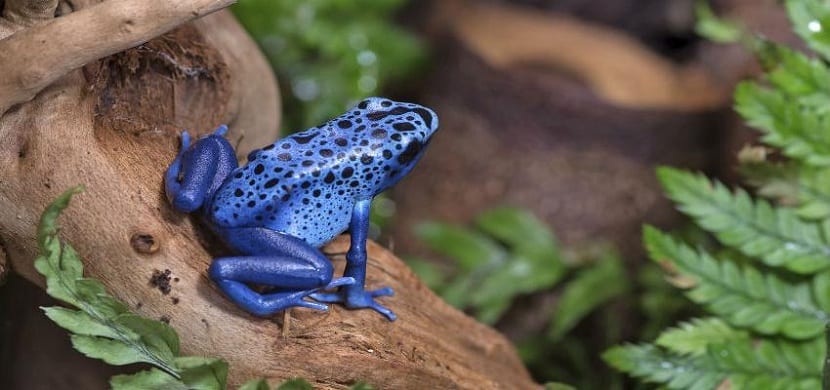
In nature there are various mechanisms to adapt to the environment. There are species that are experts in camouflage, others that, nevertheless, are good predators, and each one has their own way of surviving before the scenarios that are presented.
There are amphibians whose colors are very striking and showy. Although this can be a disadvantage when it comes to camouflage, its objective is the opposite. These amphibians are poisonous and, if caught, poison the prey.
Why are some amphibians poisonous?
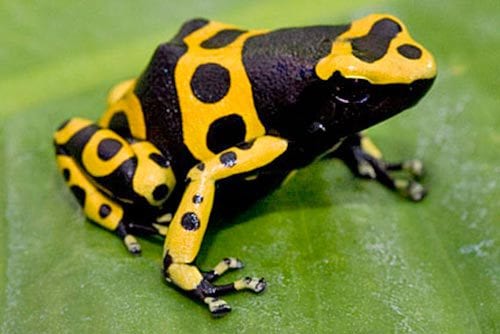
Poisons in animals are normal in nature for be able to defend yourself against predators. Amphibians have two types of glands in their skin that serve for lubrication and granular glands where they contain venom.
Most amphibians are poisonous. But this does not mean they are dangerous to health. Only a few frogs are dangerous to humans. In amphibians, the venom is stored in a venom gland that is capable of secreting it in a threatening situation. Normally, the amphibian is not very poisonous, so when it is attacked, it only causes irritation in the mouth. This causes the predator to let it go. In this way, the poison has its effect on the defense of the amphibian.
Amphibian venom also has antimicrobial properties to protect itself from pathogenic microorganisms. In nature, we know there is a process of natural selection, whereby species evolve as they better adapt to environmental conditions. Well, there is a process of natural selection that is causing those amphibians to survive better than whose poisons are more powerful and harmful. Without this process of natural selection, the venom of all poison frogs would not be as lethal as it is today. Simply, it would fulfill the function of alerting the prey of its ability to move it away and be able to warn it behind such vivid colors.
How do amphibians get poison?
Some frogs, like arrowheads, feed mostly on ants. This habit of eating ants is very common in the world of frogs and toads and it is essential for them to acquire the poison that makes them able to defend themselves from prey.
These frogs carry out feeding strategies based on the acquisition of poison through the ingestion of ants. Arrowhead frogs are the most poisonous in the world (as we will see later) and they acquire their strong poison by feeding on millipedes. These millipedes have alkaloid toxins in their bodies and frogs, after ingesting them, you kidnap and store these toxins in order to become poisonous.
How is the poison in toads?
Most toads have poisons that are harmless to humans because they do not have any apparatus that serves as an inoculator of the poison. If you catch one of these toads, the most it can cause you is some irritation to the eyes or mouth when the poison comes into contact with these areas.
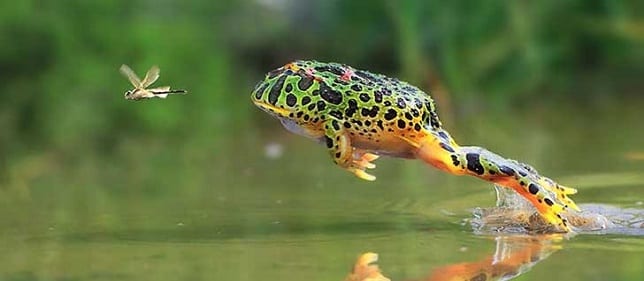
However, in dogs and cats it can cause a problem when they ingest the toad. Once they have ingested the toad, it can even cause death from serious heart problems if not treated right away.
There are toads that when ingested cause hallucinogenic effects. For example, the Sonoran desert toad (bufo alvarius) is the toad that has Stronger hallucinogenic effects.
Poison in frogs
Frogs also look like more "harmless" animals, but even they are covered and protected by poison on their skin. The only frog that does not possess poison is the green frog. She It does not have any toxic substance that can affect us or any animal. That is why we can taste frog legs without any fear of ending badly.
On the other hand, we have arrowhead frog (Dendrobates sp.) is the most poisonous frog in the world, capable of killing a gorilla just by coming into contact.
Poisonous Amphibian Strategy
These amphibians use venom as a simple response to threats from the strongest predators. It is a strategy they have to be able to adapt to the scenarios that arise and survive.
Among the deadliest frogs on the planet we find the Dendrobatids. These belong to the family of the anurans. The most famous, and previously mentioned, are the arrowhead frogs. They normally inhabit throughout Central and South America. It is an endemic species of these places, so we will not be able to find them in another part of the world.
These frogs have a characteristic that makes them unique. They have a skin whose tones are bright with saturated and very striking colors. They are not only one color, so if we want to identify them, the color is not the most appropriate key. We can find a range of colors that varies from the lightest orange, through black, yellow and even red.
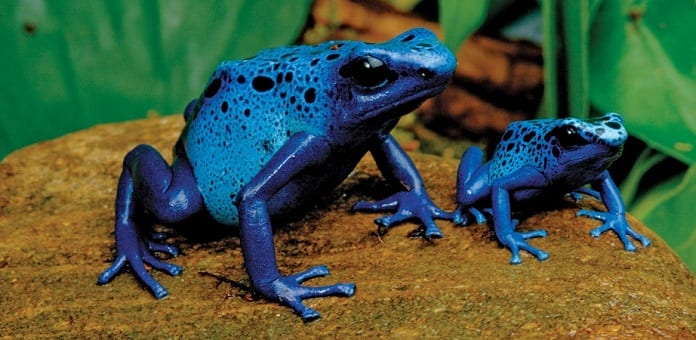
Arrowhead frogs
As I have said before, there is a process of natural selection that makes species adapt to the situations they present and only the strongest survive and develop. Throughout history, the predators of these frogs have died trying to ingest them, due to its strong poison effects. That is why, in this case, the frogs are conspicuous to "warn" the predator that it is poisonous and it does not even bother to capture it.
The normal thing in nature is to stay hidden so as not to fall prey to some other animal, but dendrobatids are the opposite. They are capable of inhabiting very diverse types of ecosystems. They can be found in places like cloud forests, as in tropical jungles, Andean forests, and riparian areas. Even these animals can survive well up to 2000 meters.
Characteristics of dendrobatid frogs
In order to spot one of these frogs we have to venture into a tropical jungle during the day. Thanks to their striking colors we can find them relatively easily. They are diurnal and their diet is based on hunting small insects and arthropods such as ants, termites, beetles, mites, etc., although it is worth mentioning that eating habits tend to vary greatly between different species of frogs.
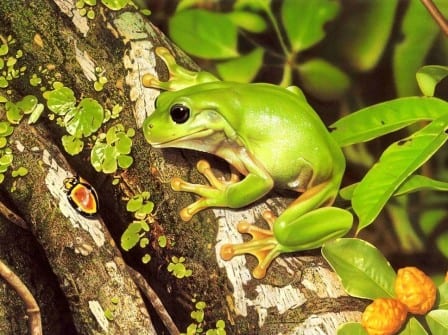
Camouflaged frog
As I mentioned before, the high levels of toxicity that these frogs have is due to the toxic alkaloids found on the surface of the skin of many of these frogs. The vast majority, when they come into contact directly on the surface of other living beings, they are capable of causing death.
Predator adaptation
As a summary of this strategy that poisonous frogs have in order to flee from their predators, we also have to add that the natural selection process by which frogs obtain increasingly powerful poisons, also act favoring many predators.
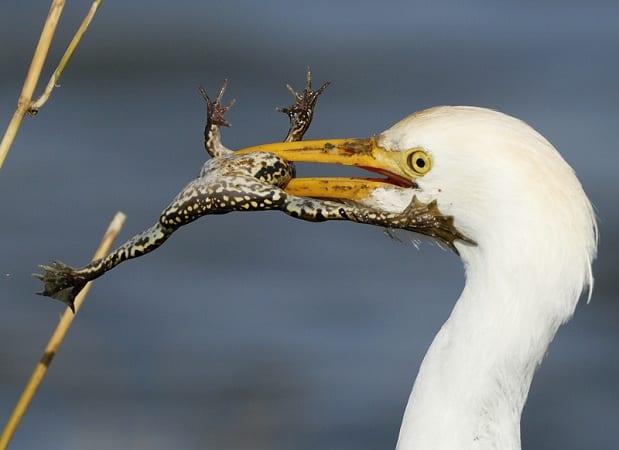
There are predators whose diet has several types of amphibians that have evolved and They are capable of skinning the frog before eating it without any danger of ingesting the poison. For example, the otter, polecat or mink, are some mustelids that have learned to skin the frog before eating it. We human beings also do the same.
As a curiosity, in some tribes, arrows were impregnated with the poison of frogs to be able to hunt more elusive animals. Hence, they have the name of arrowhead frogs.